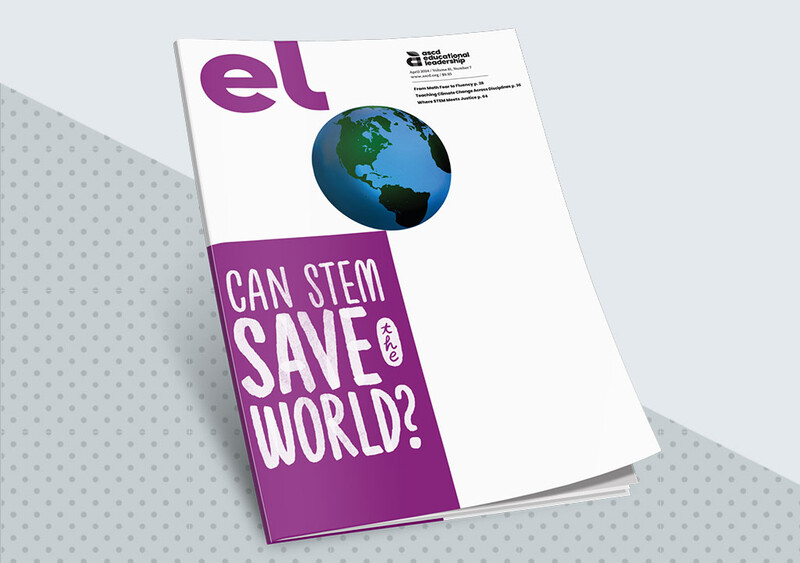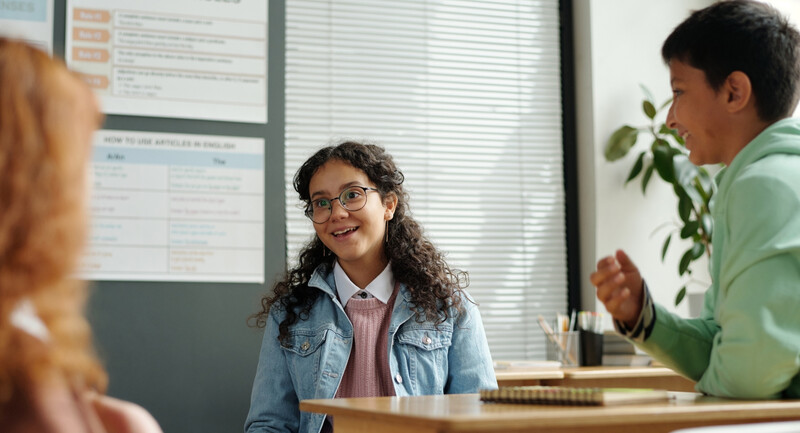In math, instruction tends to emphasize getting the right answer and getting it quickly. As a result, when students get the wrong answer, teachers may respond by helping students fix their mistakes through steps and procedures, rather than considering students’ underlying reasoning.
What if, instead of focusing on where students went wrong, we celebrated the math they know?
Asset-based pedagogy (ABP) tailors mathematics instruction to students’ existing knowledge and abilities by building upon what students already know and already can do. This educational approach redirects instructional focus from “fixing” student misconceptions to “building” on students’ math knowledge. Teachers who use ABP can make learning more effective, improve retention, and develop their students’ confidence.
3 Strategies for Asset-Based Pedagogy
In our work as professional development facilitators, we frequently observe teachers thoughtfully attending to student thinking in math classrooms. Teachers routinely probe student thinking to identify what students understand or find challenging, and to determine whether and how to progress to new content or reinforce current material. ABP brings an asset-based lens to these valuable practices and helps math teachers identify and leverage students’ mathematical strengths in their everyday work with students. We help teachers shift toward ABP using three simple strategies:
1. Orchestrating a caring learning environment.
ABP facilitates learning experiences in which students feel valued, respected, and safe to take risks. One way to do this is by acknowledging students’ mathematical contributions. For example, instead of evaluating whether students correctly solved an equation, teachers can highlight important mathematical points students have made, such as explaining that they applied an operation to both sides to maintain equality.
2. Recognizing and identifying existing knowledge and strengths.
ABP sees students’ existing math knowledge as an asset. Even if students solve a problem incorrectly, their approach often reveals valuable mathematical knowledge that teachers can affirm and build on.
3. Activating knowledge as a pedagogical tool for learning.
ABP uses students’ mathematical reasoning during instruction to advance student learning. For example, if a student explains that 12 x -5 = 60 "because you add 5, twelve times,” they’re on the right track by accurately counting 12 groups of 5, but they are missing that the equation represents 12 groups of negative five rather than positive five. You could leverage their existing understanding by using physical objects such as red/yellow counters to highlight the difference between groups of positive five and negative five, and to determine the final quantity when adding twelve groups of negative five counters.
Even if students solve a problem incorrectly, their approach often reveals valuable mathematical knowledge that teachers can affirm and build on.
Getting Started With Asset-Based Pedagogy
Analyzing student work offers a static representation of student thinking and so provides a great starting point for developing an asset-based lens. After routinely analyzing students’ mathematical assets through their written work, teachers can use ABP during classroom instruction when facilitating whole class discussions or circulating while students work individually.
Here’s an example of how ABP may evolve. Read the example below and consider: How is Mia thinking about the task?
In her response, Mia did not get the expected answer of 7/12 of a pizza per person, and she did not split the last pizza between 12 people. You may wonder if she needs support working with fractions less than 1/2. But these observations would miss the mathematical knowledge Mia did demonstrate.
Let’s review Mia’s work again using an asset-based lens. This time, consider the following:
- What are Mia’s mathematical ideas?
- What mathematical skills and knowledge does Mia already have?
- How would you work with Mia to use the math she knows to advance her learning toward a successful solution?
Although Mia did not get the right answer, she demonstrated several skills in her response. First, she figured out there were enough pizzas for each person to get half a pizza. She also recognized that there was not enough pizza for each person to get another half pizza and met the condition that each person receive the same amount of pizza.
Mia also demonstrated an understanding of many fraction concepts:
- Initial equal sharing, because she created a circle area model to represent the whole pizzas and gave each person an equal amount
- Splitting, because she divided six of the pizzas into halves, and
- Fraction notation, because she accurately represented each person’s share of pizza as the fraction 1/2.
These skills are building blocks to advance Mia’s existing knowledge and help her arrive at the correct answer.
Leveraging Strengths to Advance Learning
Now that we’ve identified some of Mia’s existing mathematical knowledge, we’ll outline potential ways to use it to advance her learning.
When students solve equal sharing problems, they usually start by halving, like Mia did. Using this strategy, Mia might halve the leftover pizza, and continue splitting each half in half. But cutting a pizza into fourths, eighths, and so on, will not lead to a fraction that evenly serves 12 people.
We can use the following progression of example problems from Elementary and Middle School Mathematics: Teaching Developmentally (Pearson, 2020), which leverage Mia’s reasoning, to help Mia develop the knowledge necessary for the original task:
Problem 1: How can 8 people share 4 pizzas?
Mia’s strategy would completely distribute the 4 pizzas evenly across all 8 people, with each person getting ½ pizza.
Problem 2: How can 4 people share 3 pizzas?
Mia’s strategy of halving would lead to one leftover pizza. Then, Mia might halve the leftover pizza, and halve those halves, creating fourths.
Supporting Mia to name the amount of the leftover pizza each person gets could involve helping her recognize that the whole pizza was split into 4 parts, which are all equal in size. Because the whole is made of four equal parts, the size of each part is called a fourth.
Each person would then get 1/2 of one pizza, and ¼ of another.
Problem 3: How can 3 people share 4 pizzas?
Again, there’s one leftover pizza, but now repeated halving will not work. Mia needs to figure out how to split the last pizza so all three people get an equal amount. We can use concrete manipulatives, like fraction circles or construction paper circles, to support her in reasoning about how to split the leftover pizza.
Next, we might ask Mia to equally share pizzas across 5 or 6 people, and observe patterns about how the number of people relates to the fraction of leftover pizza. Then, when reintroducing the original task of 12 people sharing 7 pizzas, Mia will have more knowledge to draw upon, including how to split pizzas into fractions less than ½.
Math is about exploring and making sense of complex problems. ABP helps students see they already have mathematical knowledge and skills.
This example focuses only on one student’s assets to illustrate how we help teachers begin to develop their asset-based lens. However, the more teachers practice identifying and building from students’ mathematical strengths, the more automatic it becomes to bring ABP to all of the work teachers already do as they facilitate discussions, circulate to monitor student thinking, review students’ written work, and plan their lessons.
The Benefits of Asset-Based Pedagogy
Focusing on what students don’t know unintentionally communicates that math is only about getting correct answers. But math is also about exploring and making sense of complex problems. ABP helps students see they already have mathematical knowledge and skills that can help advance their learning.
Teachers using asset-based approaches can unlock key benefits for students, including:
- Make learning more effective and improve retention. Students are more likely to understand new concepts when they are connected to their existing knowledge.
- Develop students’ confidence, motivation, and ability to see themselves as “math people” by focusing on what students do well and highlighting this for the class.
- Enhance collaboration and encourage participation from more students. Prioritizing students’ strengths helps build a classroom culture where students see each other as resources for learning.
As you analyze your students' work, we encourage you to focus on the knowledge and skills your students already demonstrate, to determine what to teach them next. By doing so, you’ll not only strengthen your instruction—you’ll also help your students feel seen, capable, and more engaged in their learning journey.
Can STEM Save the World?
Educators can engage students of all levels in multidisciplinary, inclusive, and inquiry-driven STEM instruction that is directly relevant to the world today.









